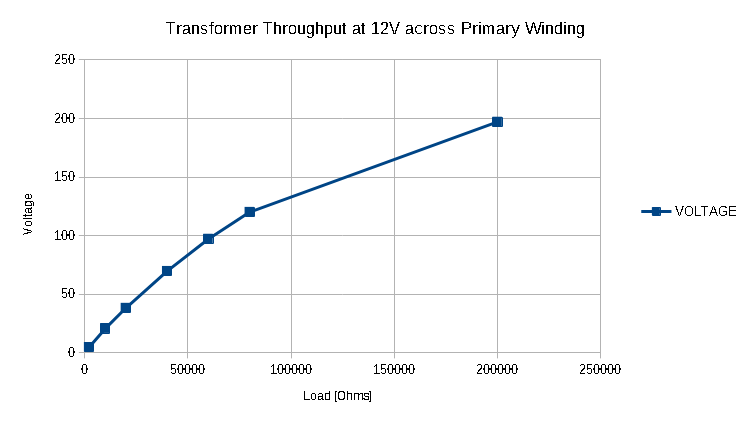I am in possession of a collection of salvaged transformers. I am curious about this one in particular:
I gather from its laminated core that it is intended for use at line frequency.
What I assume to be the primary winding is centre-tapped; each half of the winding has a DC resistance of about 7R.
The secondary winding has a DC resistance in the tens of kiloohms.
I put 10VAC at 50Hz across the full primary winding and measured over 260V on the secondary.
Call it an academic exercise; how could one go about safely estimating the output winding's maximum design current?
The windings are inaccessible behind much plastic wrapping so I can't measure the wire diameter.
I can measure the diameter of the primary winding which might give some indication.
Is heating of the transformer under load the most obvious indicator of overcurrent [or over-power?] and if yes, what increase in temperature should sensibly be considered excessive?
The dimensions of the core are:
Overall 110mm high, 70mm wide, 29mm thick, made up of about 40 laminations.
I was setting up to make some measurements and calculate rise in temperature when I noticed an unexpectedly low secondary voltage when loaded. I tried multiples and fractions of the load and the relationship between load and voltage seemed to be linear - as though the secondary's current were somehow fixed.
However testing with more values showed that perhaps this transformer is intended to provide very little current indeed:
With 12VAC across the primary, the secondary open circuit voltage is 324V.
Providing about 1mA into a 200k load this drops to just shy of 200V; into A 10K load we get just over 20V for 2mA.
It occurs to me that the graphed curve looks to be flattening, and that at some load range in the many hundreds of kOhms the output voltage should remain reasonably constant.
The question that comes to mind now is - and it's purely out of interest - what might the original purpose of this transformer have been? Its power seems quite low [per kilogram, just intuitively]. The step-up ratio is staggering; I have a hunch this was salvaged from some kind of electronic test equipment. Perhaps something to do with a CRT?




